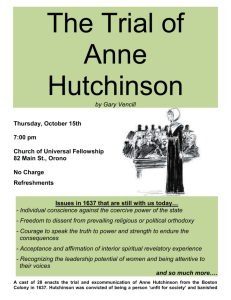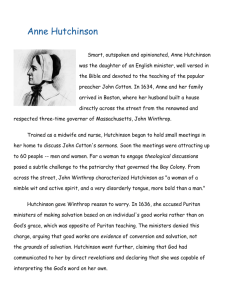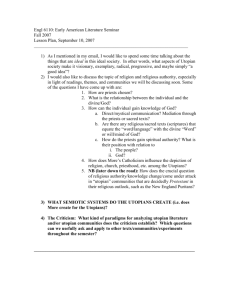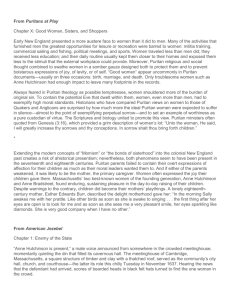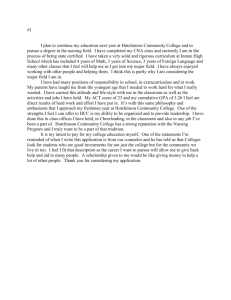Giant Animals: evolution and biomechanics inspiring future science
advertisement
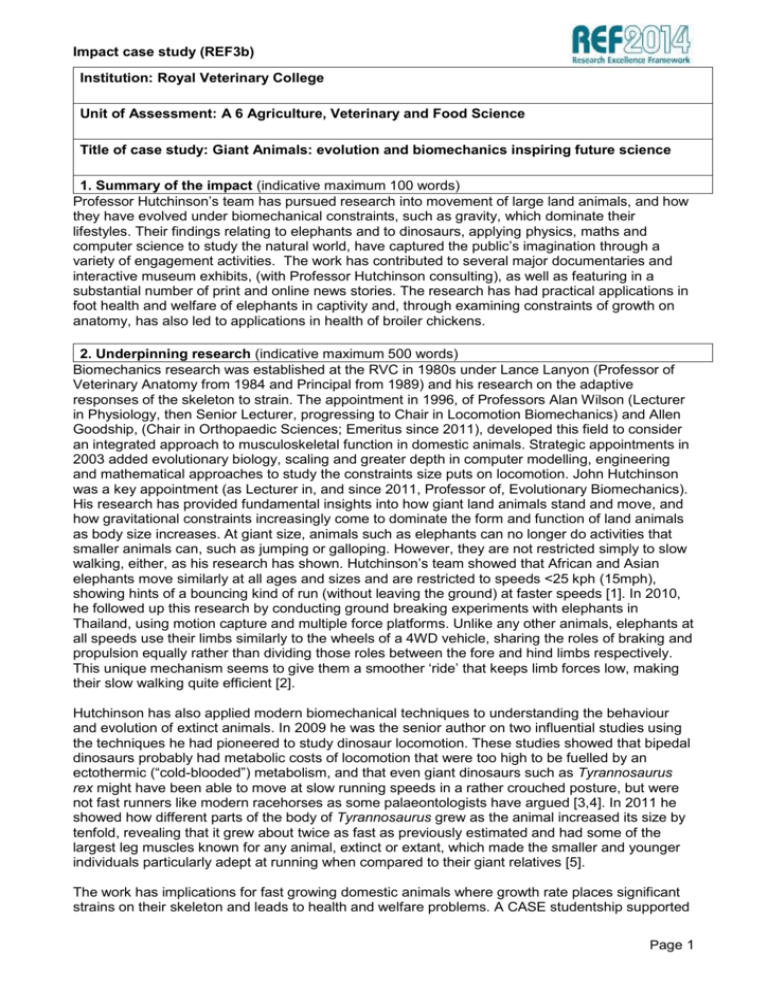
Impact case study (REF3b) Institution: Royal Veterinary College Unit of Assessment: A 6 Agriculture, Veterinary and Food Science Title of case study: Giant Animals: evolution and biomechanics inspiring future science 1. Summary of the impact (indicative maximum 100 words) Professor Hutchinson’s team has pursued research into movement of large land animals, and how they have evolved under biomechanical constraints, such as gravity, which dominate their lifestyles. Their findings relating to elephants and to dinosaurs, applying physics, maths and computer science to study the natural world, have captured the public’s imagination through a variety of engagement activities. The work has contributed to several major documentaries and interactive museum exhibits, (with Professor Hutchinson consulting), as well as featuring in a substantial number of print and online news stories. The research has had practical applications in foot health and welfare of elephants in captivity and, through examining constraints of growth on anatomy, has also led to applications in health of broiler chickens. 2. Underpinning research (indicative maximum 500 words) Biomechanics research was established at the RVC in 1980s under Lance Lanyon (Professor of Veterinary Anatomy from 1984 and Principal from 1989) and his research on the adaptive responses of the skeleton to strain. The appointment in 1996, of Professors Alan Wilson (Lecturer in Physiology, then Senior Lecturer, progressing to Chair in Locomotion Biomechanics) and Allen Goodship, (Chair in Orthopaedic Sciences; Emeritus since 2011), developed this field to consider an integrated approach to musculoskeletal function in domestic animals. Strategic appointments in 2003 added evolutionary biology, scaling and greater depth in computer modelling, engineering and mathematical approaches to study the constraints size puts on locomotion. John Hutchinson was a key appointment (as Lecturer in, and since 2011, Professor of, Evolutionary Biomechanics). His research has provided fundamental insights into how giant land animals stand and move, and how gravitational constraints increasingly come to dominate the form and function of land animals as body size increases. At giant size, animals such as elephants can no longer do activities that smaller animals can, such as jumping or galloping. However, they are not restricted simply to slow walking, either, as his research has shown. Hutchinson’s team showed that African and Asian elephants move similarly at all ages and sizes and are restricted to speeds <25 kph (15mph), showing hints of a bouncing kind of run (without leaving the ground) at faster speeds [1]. In 2010, he followed up this research by conducting ground breaking experiments with elephants in Thailand, using motion capture and multiple force platforms. Unlike any other animals, elephants at all speeds use their limbs similarly to the wheels of a 4WD vehicle, sharing the roles of braking and propulsion equally rather than dividing those roles between the fore and hind limbs respectively. This unique mechanism seems to give them a smoother ‘ride’ that keeps limb forces low, making their slow walking quite efficient [2]. Hutchinson has also applied modern biomechanical techniques to understanding the behaviour and evolution of extinct animals. In 2009 he was the senior author on two influential studies using the techniques he had pioneered to study dinosaur locomotion. These studies showed that bipedal dinosaurs probably had metabolic costs of locomotion that were too high to be fuelled by an ectothermic (“cold-blooded”) metabolism, and that even giant dinosaurs such as Tyrannosaurus rex might have been able to move at slow running speeds in a rather crouched posture, but were not fast runners like modern racehorses as some palaeontologists have argued [3,4]. In 2011 he showed how different parts of the body of Tyrannosaurus grew as the animal increased its size by tenfold, revealing that it grew about twice as fast as previously estimated and had some of the largest leg muscles known for any animal, extinct or extant, which made the smaller and younger individuals particularly adept at running when compared to their giant relatives [5]. The work has implications for fast growing domestic animals where growth rate places significant strains on their skeleton and leads to health and welfare problems. A CASE studentship supported Page 1 Impact case study (REF3b) by Cobb-Vantress Inc, a major chicken breeding company, started to address these issues [6], with a substantial BBSRC funded research now exploring constraints on locomotion and breathing in broiler chickens, with University of Manchester colleagues. Other Quality Indicators Over £3 million research funding since 2004, including grants from BBSRC, NERC, Royal Society, and Leverhulme Trust. Hutchinson was appointed to a Royal Society Leverhulme Trust Senior Research Fellowship 2012-13. 3. References to the research (indicative maximum of six references) 1. Hutchinson, JR, Schwerda, D, Famini, DJ, Dale, RHI, Fischer, MS, Kram, R. 2006 The locomotor kinematics of African and Asian elephants: changes with speed and size. Journal of Experimental Biology, 209: 3812-3827. DOI:10.1242/jeb.02443 2. Ren, L., Miller, C., Lair, R., Hutchinson, JR. 2010 Integration of biomechanical compliance, leverage, and power in elephant limbs. Proc Nat Acad Sci USA., 107:7078-7082. DOI: 10.1073/pnas.0911396107 3. Pontzer, H., Allen, V., Hutchinson, JR. 2009 Biomechanics of running indicates endothermy in bipedal dinosaurs. PLoS ONE, 4(11): e7783. DOI:10.1371/journal.pone.0007783 4. Gatesy, SM, Baeker, M., Hutchinson, JR. 2009 Constraint-based exclusion of limb poses for reconstructing theropod dinosaur locomotion. Journal of Vertebrate Paleontology, 29:535-544 DOI: 10.1671/039.029.0213 5. Hutchinson, JR., Bates, KT, Molnar, J, Allen, V, Makovicky, PJ. 2011 A computational analysis of limb and body dimensions in Tyrannosaurus rex with implications for locomotion, ontogeny, and growth. PLoS One, 6(10): e26037. DOI:10.1371/journal.pone.0026037. 6. Paxton, H, Daley, MA, Corr, SA, Hutchinson, JR. 2013 The gait dynamics of the modern broiler chicken: A cautionary tale of selective breeding. Journal of Experimental Biology. 216(Pt 17):3237-48 DOI: 10.1242/jeb.080309 4. Details of the impact (indicative maximum 750 words) Hutchinson has actively engaged in a range of activities directed towards public interest in and understanding of science, to ensure active translation of his research across an array of topics and techniques. The public is widely receptive to the extinct and/or highly appealing animals such as dinosaurs and elephants that this research features, as well as the cutting-edge technologies such as 3D computer modelling, biomechanics, motion capture and medical imaging involved. The work has inspired or informed international television documentaries and two major museum exhibits since 2008, delivering wide reach across Europe and North America. The “Inside Nature’s Giants” documentary series, first screened on Channel 4 in 2009, had 1.2-2 million viewers per episode in the UK, and won the 2010 BAFTA award in the Specialist Factual category [a]. The National Geographic channel also bought the series, increasing the potential reach to 160 million homes in 143 countries. Hutchinson was a consultant for the programme, editing scripts and providing 60 hours of paid scientific/technical expertise as well as appearing onscreen in 2 episodes and giving acknowledged input on the website content. His invitation to act as a consultant on this production was a direct result of the scientific publications on elephant locomotion and his personal interactions with zoos and elephant keepers during the research. Three further series have followed, with episodes broadcast on PBS in the USA in 2012. Since 2011, a book, DVDs and iPad App have been sold based on the programmes. The RVC research was featured in the “Dino Gangs” documentary on the Discovery Channel, which aired worldwide, with the work on theropod growth and speed also referenced in the accompanying book [b]. Other programmes covering the team’s work include "Evolutions" (National Geographic, 2008), “Raw Anatomy" (National Geographic Channel, 2009) and ‘How to build a Dinosaur” (BBC4, 2011) [c]. Page 2 Impact case study (REF3b) Hutchinson’s expertise and publications in the field of dinosaur locomotion have led to contributions to the design of interactive exhibits produced for extensive museum tours. He was the Chief Palaeontology Advisor, providing the main quality control on scientific evidence, for the ‘Be The Dinosaur’ travelling museum exhibit, which includes an immersive multi-player video experience, and which has toured 25 museums in the USA and Canada since 2008. Testimonials on the website of the exhibit’s creators include museum curators reporting increased attendance (“We had a 9% increase in attendance over the previous summer while many other Museums in our State experienced a drop in attendance over the same timeframe." Executive Director, MidAmerica Science Museum), together with visitor enthusiasm (“…this exhibit was a huge hit with both kids and adults, resulting in a noticeable increase in attendance." Vice-President of Exhibits and Operations, The Children’s Museum of the Upstate). Testimonials also commented on quality content (“… engaging interactive technology, a wealth of scientific information collected by experts in the field of Paleontology, and an unforgettable learning experience.” Marketing and Exhibits Manager, ETSU/Gen) and positive educational value (“The educational content was superb and the best part was that young and old alike learned about science in a hands-on way." Director of Education, "Queen of Discovery", GWIZ - The Science Museum) [d]. The RVC research on giant animals was explained and featured prominently as part of a second travelling museum exhibit, “Dinosaurs: Ancient Fossils, New Discoveries”, which has attracted approximately 1.5 million visitors spread across 10 museums on two continents since 2008 [e]. The writer/producer from the American Museum of Natural History, who produced the ‘Walking with T. rex’ video within the exhibition, commented: “The exhibition demonstrates to visitors that scientists are still debating and arguing about evidence … Theropod Biomechanics, utilizing Professor Hutchinson’s research findings, is an integral section of the exhibition… YouTube video of the ‘walking’ mechanical T. rex from the exhibition has been posted by a member of the public, receiving 8,700 views [9,500 by 7/13], with written commentary and comments indicating real engagement with the science.” [f] Hutchinson is regularly directly involved at RVC in engagement with the public and, especially, school-age audiences: e.g. He presented his research to 30 Year-10 students (mostly black and minority ethnic and all from lower socio-economic groups) at the RVC in July 2011. In feedback given by them after their visit, 100% said they aimed to attend university and that this Summer School session had strengthened this attitude [g]. In 2012, Hutchinson’s nomination to deliver the Charles Darwin Award lecture at the British Science Festival in Aberdeen was successful [h]. The lecture theatre was fully booked (250 attendees) for the highly interactive presentation (incorporating the Be The Dinosaur simulation), with many visitors staying on to ask questions and examine specimens, plus subsequent discussion via Twitter. All feedback responses rated the event ‘good’ or ‘excellent, with a good level of understanding regarding overall research results [i]. The research has received extensive media coverage [j] and Hutchinson is also highly active via social media – blog and twitter – to promote discussion of his research [k]. Views of the ‘What’s in John’s Freezers’ blog average 100-200 per day, and peaked at 10,564 in April 2012, after posting stills from the Inside Nature’s Giants footage of elephant dissection [l]. The ‘Chicken of the Future’ website and blog discusses the current research project addressing health problems of broilers [m]. The project has in-kind support from Cobb-Vantress, the world’s leading broiler breeding business, and follows pilot studies supported by the company, in a CASE studentship on how the biomechanics of fast growing birds leads to leg health problems. The Director of Global Animal Welfare at Cobb-Vantress Inc. commented: “. When we were introduced to Professor John Hutchinson’s research on Tyrannosaurus growth and movement, we made an unexpected connection to our commercial concerns in bird-rearing. The limbs of the dinosaur and chicken have remarkable resemblance and although they differ vastly in scale, their growth from hatching to mature size may be subject to similar stresses… we hope this will Page 3 Impact case study (REF3b) ultimately contribute to solutions for opportunities in continuous improvement in the health and well-being of broilers and broiler breeders in the global poultry industry, while also providing enhanced economic benefits for producers.” [n] Since 2005, Hutchinson has been working with a number of zoos and safari parks including Colchester, Woburn and ZSL Whipsnade, in order to improve management of elephants in captivity. The Curator of Colchester Zoo commented: “RVC’s research into the locomotion of large animals has underpinned our studies… Intractable problems of foot health have been one of the most common causes of death and euthanasia for elephants in captivity. Over 70 elephants are kept … in the UK and Ireland, and Defra has commissioned research into the welfare, housing and husbandry of the UK population. If zoos and safari parks do not improve their conditions for elephants, they risk losing them altogether... Our collaboration has led to ways of monitoring gait for abnormalities that may indicate discomfort from infection, disease or damage at the earliest stage and so assist in addressing these problems promptly… These methods of gait analysis and foot inspection are now becoming standardised and are being disseminated as best practice across the zoological community internationally.” [o] 5. Sources to corroborate the impact (indicative maximum of 10 references) a. http://www.windfallfilms.com/show/838/Inside+Natures+Giants.aspx [accessed 06 Aug 2013] http://www.channel4.com/programmes/inside-natures-giants/articles/all/credits [accessed 24 Oct 2013] b. http://www.dinogangs.com/ [accessed 06 Aug 2013] & Dino Gangs: Dr Philip J Currie’s New Science of Dinosaurs. Young J. 2011. Collins. ISBN: 978-0007413393. Pages 85, 212-4, 216-7, 223, 282.) c. http://www.bbc.co.uk/programmes/b014vy5y [accessed 06 Aug 2013] d. http://www.eurekaexhibits.com/our-exhibits/be-the-dinosaur/ [accessed 06 Aug 2013] e. http://www.amnh.org/traveling/exhibitions/dinosaurs.php [accessed 06 Aug 2013] f. Statement from writer/producer, Exhibitions Department, American Museum of Natural History. Held by RVC. g. Feedback held by Widening Participation team, RVC. h. http://www.britishscienceassociation.org/sites/default/files/root/festival/BSFprog12%20lr%2 02.pdf [accessed 08 Aug 2013] Page 17 of 54. i. British Science Festival feedback data, held by RVC. j. Sample media coverage – 45 online stories 12-14 October 2011. Held by RVC. k. https://twitter.com/JohnRHutchinson [accessed 08 Aug 2013] l. http://whatsinjohnsfreezer.com/2013/03/03/bday1/ [accessed 08 Aug 2013] m. http://thechickenofthefuture.com/ [accessed 08 Aug 2013] n. Statement from Director of Global Animal Welfare, Cobb-Vantress Inc. Held by RVC. o. Statement from Curator of Colchester Zoo. Held by RVC. Page 4
